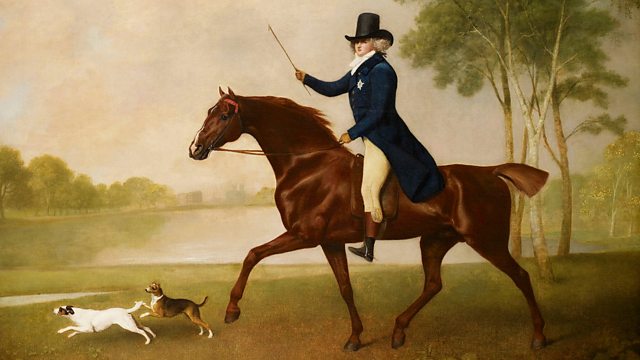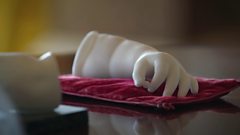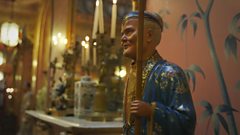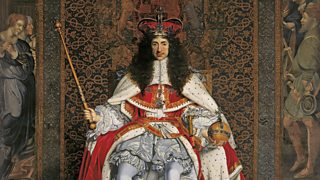
Palaces and Pleasuredomes
Andrew Graham-Dixon explores the spectacular, extravagant collecting of George IV and the shared artistic passions of Queen Victoria and Prince Albert.
Andrew Graham-Dixon continues his exploration of the Royal Collection, the vast collection of art and decorative objects owned by the Queen. In the third episode he has reached the age of the Romantics - the flamboyant George IV who created so much of the visual look of the modern monarchy, and Queen Victoria and Prince Albert, for whom collecting was an integral part of their happy marriage.
As Prince of Wales, George was a famously loose cannon - a spendaholic prince whose debts ballooned in tandem with the royal waistline. But as a collector, Andrew argues, George was one of the great artistic figures of the Romantic age. His tastes were very much formed by the fallout from the French Revolution; as the great French aristocratic collections were broken up, an exodus of great art flooded into London's auction rooms - and George was there to buy them. He assembled a world-class collection of Dutch and Flemish masters, including key works by Rembrandt, Cuyp and de Hooch, as well as some of the greatest examples of French furniture ever produced, which Andrew sees in the state rooms of Buckingham Palace.
George IV was a natural showman and Andrew argues that his visit to Edinburgh in 1822 helped pioneer the modern monarchy's use of spectacle. But, like Henry VIII and Charles before him, George had the sense to partner up with an artist of genius - Sir Thomas Lawrence. The result of their collaboration is seen in a series of stirring battlefield portraits that line Windsor Castle's Waterloo Chamber.
Queen Victoria is often depicted as the uptight opposite of her louche uncle, but Andrew argues that, for her, art was just as important. This was a passion that she could share with her beloved husband, Prince Albert, who believed that learning how to make art was the best way to understand it.
Andrew visits Osborne House on the Isle of Wight, still filled with their art possessions, including marble facsimiles of the arms and legs of her infant children, commissioned by Victoria herself.
Andrew argues that Albert was a natural curator; he instilled a love for collecting in his children and compiled an early 'database' of the complete works of Raphael which he kept in his new 'print room' in Windsor Castle as a tool for art historians. But it is on the streets of South Kensington ('Albertopolis') that Andrew discovers Albert's real legacy - the museums and educational institutions here are a testimony to his vision for the area, purchased with the help of profits from the Great Exhibition.
Last on
Clips
-
![]()
Web Exclusive: Vermeer
Duration: 02:51
-
![]()
Victoria's children
Duration: 01:46
-
![]()
George IV's Writing Desk
Duration: 02:01
-
![]()
Welcome to the House of Fun
Duration: 02:30
Credits
| Role | Contributor |
|---|---|
| Presenter | Andrew Graham-Dixon |
| Expert | Rufus Bird |
| Expert | Martin Clayton |
| Expert | Deborah Clarke |
| Expert | Jo Horton |
| Executive Producer | Judith Winnan |
| Series Producer | Sebastian Barfield |
| Director | Sebastian Barfield |
| Editor | Stuart Davies |
| Production Manager | Kate Horvath |
| Production Manager | J Ruth Stevens |
| Production Coordinator | Sam Haines |
| Production Coordinator | Sophie Taylor |
| Production Coordinator | Anna Kington |
Broadcasts
Featured in...
![]()
Art, Passion & Power
In a major new series, Andrew Graham-Dixon explores the history of the Royal Collection.
![]()
Art, Passion & Power
Andrew Graham-Dixon explores the history of the Royal Collection.
Royal Collection season
Queen Victoria's watercolour albums
These albums became precious mementos for Victoria after the untimely death of Albert
George III's 'Buy British' drive for the royal art collection
The family retreat at Buckingham House was filled with works by British artisans.
The Curators: Hans Holbein
Insights into Holbein's series of portraits bringing the court of Henry VIII to life.






